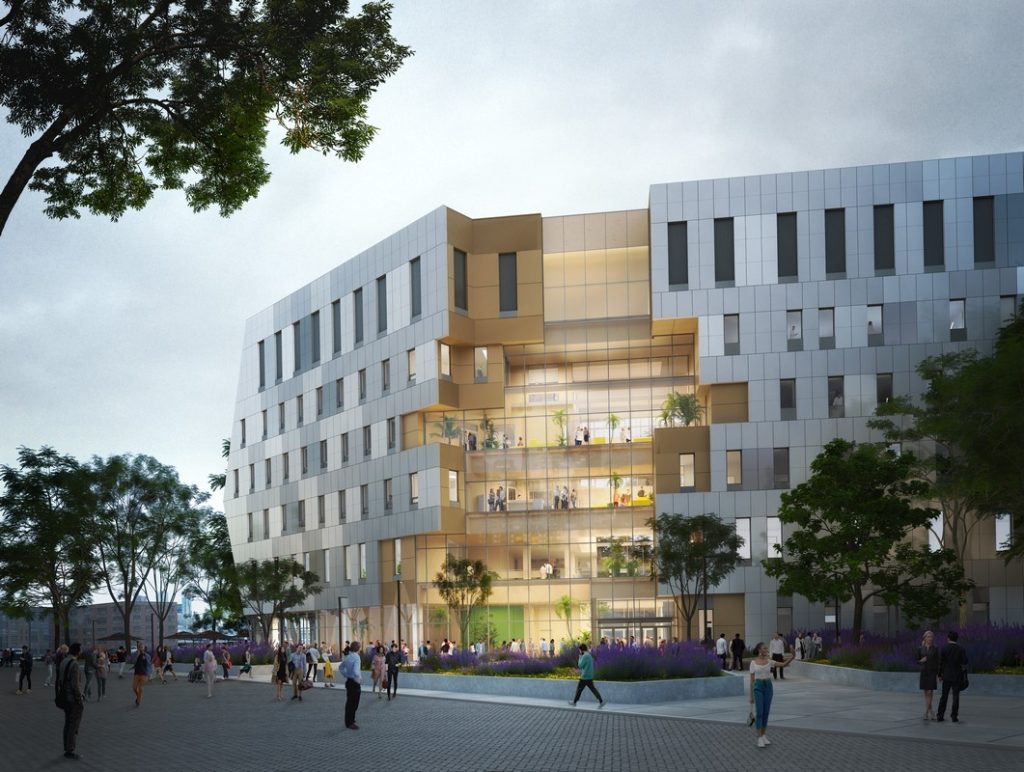Scarborough Academy of Medicine and Integrated Health at the University of Toronto’s Scarborough Campus breaks ground
Diamond Schmitt and MVRDV have revealed the design of the new building for the Scarborough Academy of Medicine and Integrated Health (SAMIH) at the University of Toronto’s Scarborough Campus (UTSC).

Diamond Schmitt and MVRDV have recently revealed the design of the new building for the Scarborough Academy of Medicine and Integrated Health (SAMIH) at the University of Toronto’s Scarborough Campus (UTSC).
The design of SAMIH at the University of Toronto Scarborough was led by Diamond Schmitt and MVRDV, with construction managed by EllisDon.
SAMIH combines flexible laboratory spaces, classrooms, and offices for the university with functions that aim to bridge the gap between the university and the community including a psychology clinic and a pharmacy.

These amenities sit on either side of a five-storey atrium that opens up towards the exterior and creates a new building at the gateway of the campus wrapped in a façade of integrated solar panels that help to power the building.
“The design of SAMIH is one that is focused on healing. Not only in its role as a place of integrated health education, medical education and research, and commitment to healing people, but to envisioning an architecture that is healing for the environment,” said Diamond Schmitt principal, Don Schmitt. “Our vision is about creating community, between students, faculty and those that will use the building, and with the academy’s greater surroundings.”

SAMIH is positioned at the intersection of Morningside Avenue and Military Trail and stands as an important gateway to U of T Scarborough. It is the first building that can be seen when entering the north campus.
The academy also considers the university’s future development which will re-align Military Trail along the north of the building where there are plans for a new LRT line. There are also plans to transform the original Military Trail into a new pedestrian spine that will connect the south campus.
The chamfered western corner of the building creates a welcoming plaza and the ground floor façade is transparent, creating a flow between the public gathering space and the building.
The building is characterised by a dynamic five-storey atrium that reveals the activity inside. It also establishes a pedestrian artery that runs through the central axis of the building.
The atrium provides unobstructed views to the exterior and allows for more natural light to penetrate the interior. It also splits the building’s programme, with the offices and classrooms on the western side and labs on the east, all of which are connected by walkways on each level.

“The programme of SAMIH was an inspiring starting point for a design,” said MVRDV founding partner, Nathalie de Vries. “A university building that also serves as a much-needed facility for the local community deserved a building that would celebrate and display that mixture – and that’s what we hope to do with this atrium, creating visual and physical connections between all the different parts of the building to give insights into everything that is happening here.”
The landscape by Vertechs Design places a focus on native plants and Indigenous planting strategies and the paving is inspired by patterns created by moving water. The interior of the atrium is clad in wood and decked in plants, which reinforces this connection to the landscape and contributes to the natural and healthy feeling of the interior.
The building’s exterior uses a mixture of cool greys. The cladding of the south, east, and west-facing façades use Building-Integrated Photovoltaics. These multi-layered panels generate energy and the inclusion of this technology will contribute a significant amount of renewable energy towards the building’s operation.

The structure of the building is based around a 9.6-metre steel grid which serves to extend the building’s lifespan, making it more sustainable.
In addition to the SAMIH building, Diamond Schmitt and MVRDV are also working on the Temerty Faculty of Medicine’s new James and Louise Temerty Building, at the University of Toronto’s St. George campus in downtown Toronto which will replace the west wing of the Medical Sciences Building on King’s College Road and feature state-of-the-art teaching and research facilities.
